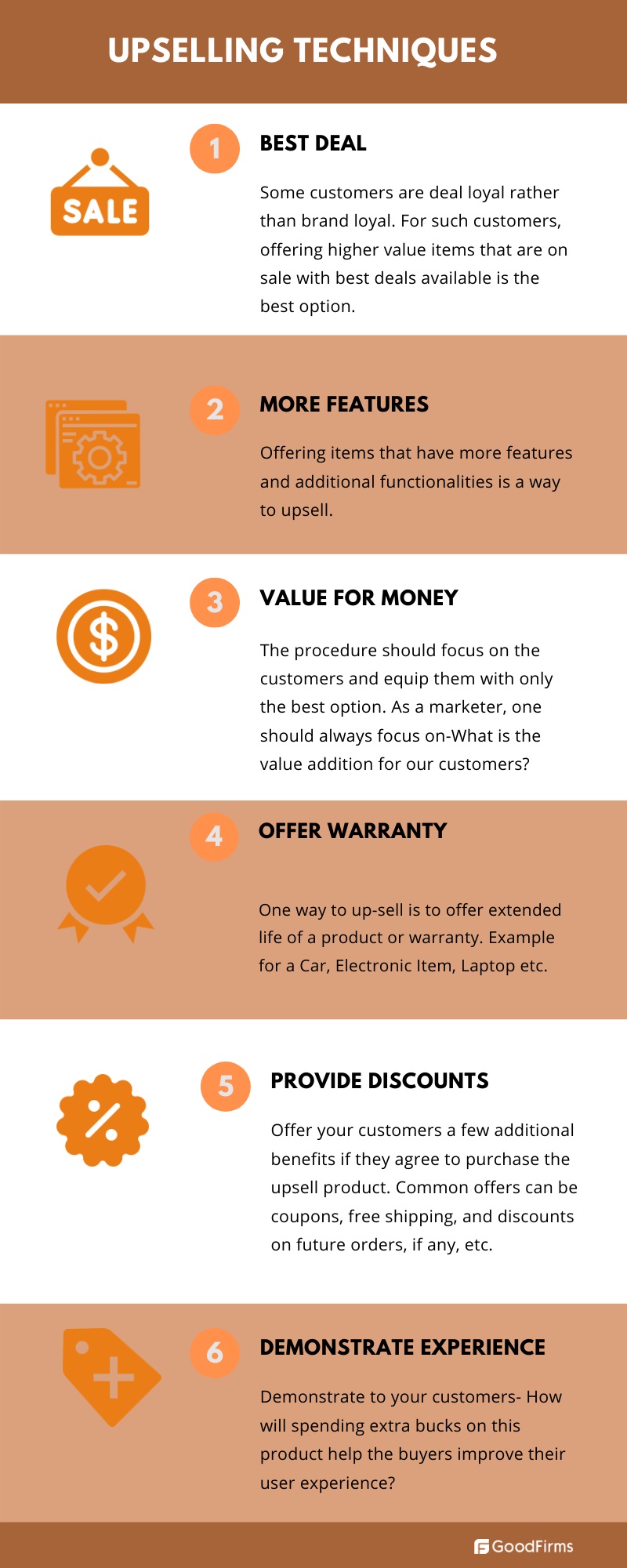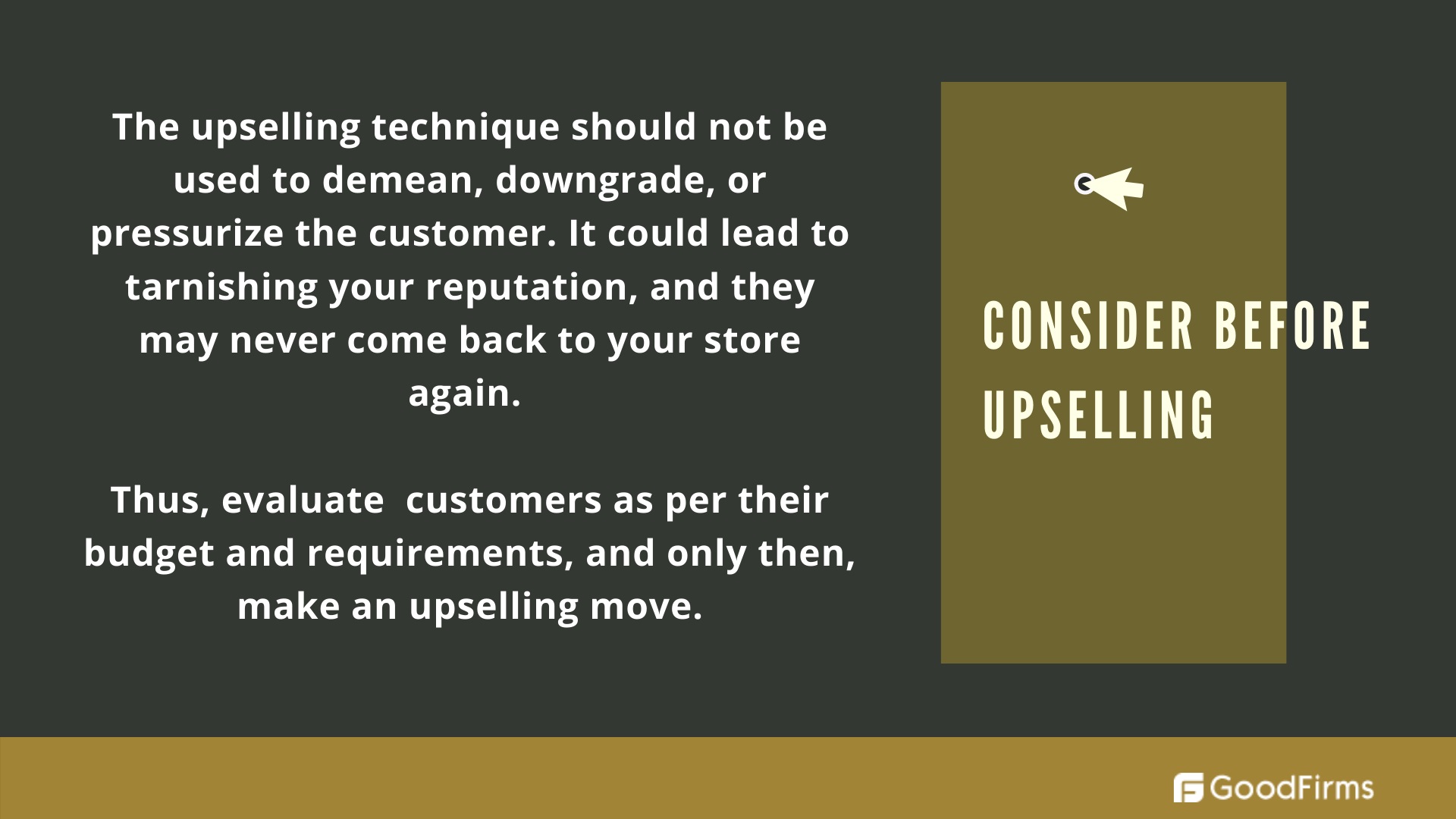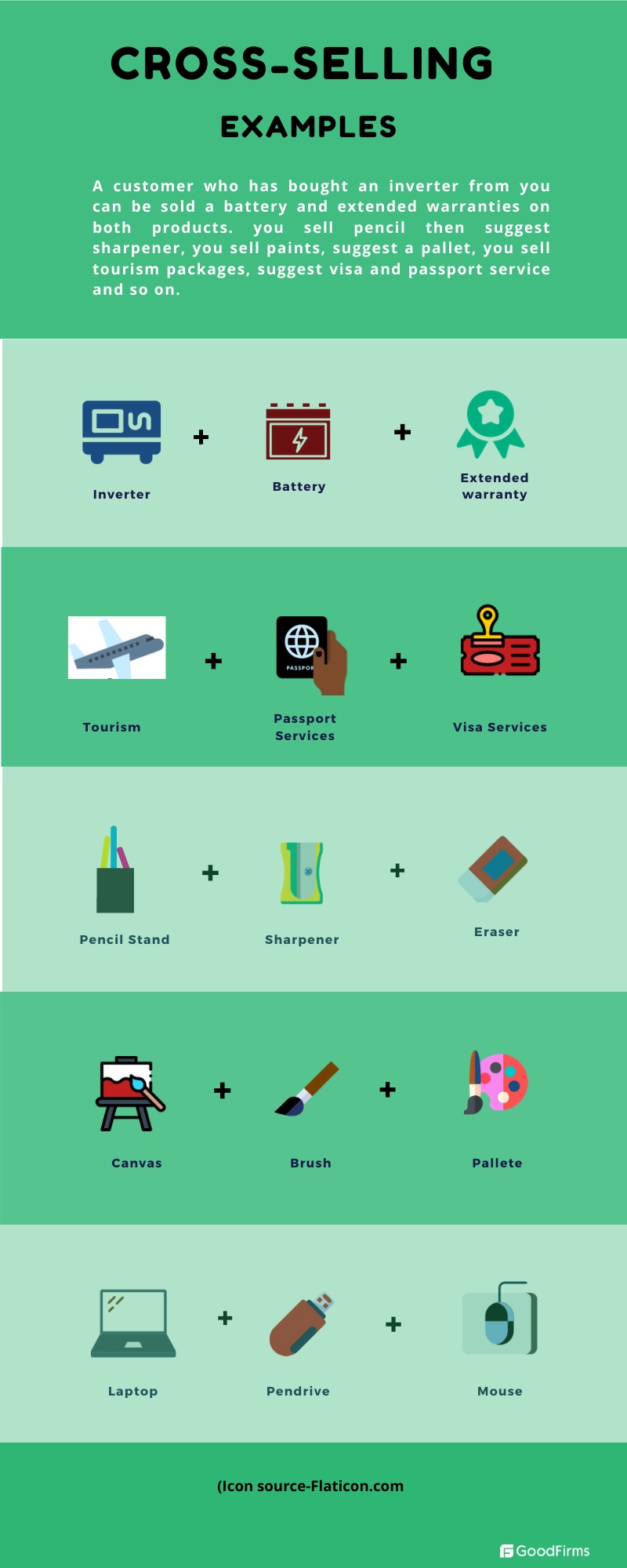Table of Content:
- What is Upselling?
- What is the purpose of upselling?
- What is the Financial Value of Upselling?
- How upselling helps in Customer Retention?
- What are some best upselling techniques and practices?
- YOU CAN’T UPSELL to every customer
- Down selling vs. Upselling
- Use 'Personalization' to boost upselling
- How to use sales data to identify 'upselling opportunities'?
- Upselling on E-Commerce Platforms
- What is cross-selling?
- What is the difference between upselling and cross-selling?
- CRM software for Upselling and Cross-selling
Businesses often use various techniques and practices that are win-win situations for both; themselves and their customers. Devising a simple way to make life candid for customers assures that they will return in the future. In this respect, Upselling is a perfect fit. Upselling is a common practice in B2B as well as B2C selling situations. It works well in traditional as well as online businesses. Upselling is a sales and marketing tactic that gives the seller a higher profit margin and provides customers with the best buying experiences ever. It adds a value quotient for the customers, which makes them want to come back for more.
This article explains all essential aspects of Upselling, its purpose, importance, benefits, techniques, and many more. Businesses also cross-sell. Cross-selling is an entirely different form of selling technique to bring in more revenues. This article will also throw light on cross-selling and the difference between cross-selling and upselling. Let's start with the definition of Upselling.
What is Upselling?
Upselling is a selling strategy or technique to persuade buyers or customers to purchase a more expensive or premium product or service. It is a process to convince the buyers to buy an upgraded version of the products or in more quantity than they formerly wished to purchase. In a nutshell, it is to convince the buyers to spend more money on the product than their actual budget for better quality and buying experience. It boosts the overall revenue of the company. It is a legitimate and ethical tactic in the marketing and sales world, provided that the premium service or product offers genuine value for the customers.
In a recent survey conducted by GoodFirms, more than 58.3% of corporate businesses agreed that Upselling is a beneficial marketing strategy.
Below is an example of Upselling:
Suppose a customer is looking for a perfect camera for personal use. He has no idea about the various types of cameras, but he needs a better picture quality. His friend has suggested he get a DSLR (digital single-lens reflex camera).
Scenario 1:
The shopkeeper shows him three DSLR models with different pricings and briefs about the features of each one of them. See below image:

Outcome: The customer chooses the first one, which will cost him $2100 and leaves. The shopkeeper wasn't able to upsell even after showing three different models. Now consider scenario two:
Scenario 2:
The shopkeeper asks for the requirements. As soon as he knows that the customer is looking for high picture quality, he recommends him to buy the third option (DSLR Prime) as it comes with the best image quality.
- The shopkeeper mentions that the customer will get an upgrade of 14 megapixels for $800 only.
- The shopkeeper gives statistical analysis that it's an 87.5% better image quality for just 38% more price.
- The shopkeeper also mentions that there is a 10% discount on the premium product. (Even when the 10% discount is available on all products, the shopkeeper re-emphasizes the same with DSLR prime in the context).
- He also mentions that all pictures of the customer’s family members, colleagues, and friends will look amazing and flawless with DSLR prime.
- And finally, he mentions that the previous customers who bought DSLR prime have given a very positive review of the camera with zero complaints so far regarding technical functionality.
Outcome: The customer buys the third option. He is happy to make a perfect deal, and the shopkeeper gets more revenue. The shopkeeper also knows that the customer will be happy with the 30-megapixel image quality more than he would have been from 16 megapixels. The customer will suggest his friends and colleagues buy the DSLR prime only. There will be no complaints, and when asked for a review, the customer will provide positive feedback. Thus Upselling not only brings more revenues during the momentum of a sale, but it also increases customer satisfaction, brand loyalty, and retention. Upselling is an unavoidable essence of a business.
What is the purpose of upselling?
More revenues:
The primary purpose of the upselling tactic is pumping in more revenue to the business.
Offer upgraded products
When customers are convinced to buy upgraded products, their satisfaction with the product quality gets better. It centers on helping your customers by suggesting awards, upgrades, or addons that will ultimately produce more worth and convenience. For instance, Apple upgrades its iPhones regularly and is one of the best examples of upselling.

Create meaningful relationships with customers:
Upselling is not a cheap tactic. It is mainly done to expose the customers to other better available options, which they might have missed taking into consideration. If the technique is used effectively, it can not only do wonders for your current revenue generation but also increase customer satisfaction quotient. Thus, upselling helps businesses create meaningful relationships with customers.
Create Relevance
Upselling creates relevance for the bought product. A customer buying 32” inch LED television is suggested to buy a 48” that comes with free Bluetooth speakers makes the offer relevant for him/her.
What is the Financial Value of Upselling?
Upselling leads to improved Customer Lifetime Value (CLV):

How upselling helps in Customer Retention?
Using upselling tactics on existing customers is much easier than acquiring new customers, as generating new leads is an exhaustive and expensive procedure. And thus, it is convenient to optimize the sale to a client who already trusts you. As upselling offers higher quality products, your customers become happy with the suggestions that you provided, and it builds trust.
When you gain the customers' trust, you automatically retain them as your regular or loyal customers. They don't think twice before making another significant investment with your consultation and supervision. This way, you successfully badge customer retention.
Other benefits of upselling:
- Increased Profits: Increasing profits is the primary advantage that businesses avail using the technique of upselling. If a customer spends more than what they intend to from your products or services, it's a sure-shot victory. It increases your profit.
- Increased ROI: Upselling is not only a one-time big sale but an investment. Additional selling of your products or services undoubtedly increases your return on investment. When you offer a better alternative to your customers, which genuinely satisfies their needs, they become a regular and loyal customer.
What are some best upselling techniques and practices?
Exposing customers with other options in your collection, explaining their features and benefits in great detail, and creating a vivid comparison of the available options is not a cakewalk. Below are some important techniques and practices to ace up the upselling process:

Follow the best upsell practices: Dos and Don'ts.
Dos:
Be specific and informed:
Make sure to scrutinize your target audience thoroughly and cater to the client's requirements accordingly. It will provide the customers with a sense of customized and personalized offer designed especially for them. Also, it is essential to be informed before informing. Means, as a sales executive or a marketer, you should be well informed about the products, offers, complimentary goodies attached to each offer.
Start mentioning in early stages:
Upselling should be started from a very early stage of the buying process. This allows the customers to reconsider their preferences and opinions on a particular product to help them choose between price and product features.
Talk about more benefits.
Make the customers absorb all the necessary benefits, features, functionality, pros, and cons, pricing, etc. Give them a vivid comparison of features and benefits and try to make it visible why they should be buying the premium or the upgraded version. It shows customers that you care and respect their needs and that it is not only a profitable deal only at the businesses' end.
Make proper pricing models:
Make proper pricing models before you pitch different products. Good pricing models help software-as-a-service (SaaS) providers win more deals, improve renewal rates, and increase upselling. (Forrester Research). Finally, showcase a comparison for them to make a choice which shall benefit them.
Show Social Proof:
Show your customers the testimonials and reviews of customers using the products and services you want to upsell. Social proof is a powerful tool for convincing people.
Be ethical:
While making use of the upskilling technique,one should only adopt ethical means and should not sell useless costly items. It can spoil the seller-customer relationship.
Be Relevant
Relevance is the key to a definite upsell. You cannot suggest a buyer purchase a car when he is inquiring about a high-end bike.You cannot say that the bike will cost him $40000 so he should spend S10000 more and get a car. You might sell both in your showroom and getting $10000 more is surely an increase in the revenue but the customer will get annoyed at the irrationality and irrelevance that you displayed.
Don’ts:
Don’t make it bothersome for customers:
Don't flash your upsell products on every step of their shopping journey. It will do more harm than good. Instead, allow them to decide themselves. Upselling should emphasize on harnessing and improving the customer experience rather than making it bothersome.
Don't offer an unreasonable price jump:
Being reasonable is the sole mantra. Try not to affect their budget to a level where they say a definite "no." Remember to offer just a slight upgrade to what the customer has intended to buy. If you provide something very costly, the buyers may postpone their decision to buy that particular product or avail that service.
Don't Oversell:
Customers only like upsell offers to some limit. Make sure it's a decision that naturally comes from their end. Once you start bombarding them with offers even when they are not interested or willing, they might object your approach. Also, in some cases, the customers may refuse to buy from you at all.

YOU CAN’T UPSELL to every customer
No matter how ethical and an important approach it is for marketing and sales, upselling can be perceived as a negative approach by some customers.
- Few customers have a perception that no one should be upsold.
- Clients feel it's pushy.
- Customers think there is nothing good in it for the buyers and that it only profits the sellers as they trick customers into paying more for their goods and services.
As a marketer, you should know whom to upsell exactly? Don't upsell to a customer who insists on buying the product of his/her own choice.
If Upselling doesn’t work with reluctant customers, try another approach-Downselling.
Down selling vs. Upselling
It's an exactly opposite approach from that of upselling, wherein you offer cheap or less expensive products of what they had previously intended to purchase. It immensely helps in building customer loyalty and boosts a positive brand image. However, you have to be more careful to perform this approach without offending the customer.
Use 'Personalization' to boost upselling
Personalization is an approach to properly utilize your sales data and analytics for providing a customized experience to the customers.
Understand Your Customers' Buying Journey:
Collect sales data and CRM data to understand the following things:
- How do customers find you?
- What age group do they fall into?
- What are their occupations?
- What portions influence their buying choices?
- How customers want their orders to be met, etc.?
The answers to these questions will help you target your core audience better and improve customer satisfaction quotient.
Determine the Best Personalization Method:
- Integrate your CRM and POS software to make the staff of your store aware of a customer's previous purchases, if any. This way, your team can suggest to your customers the products they might like. It will also help you understand what channels to use and how to make an impactful personalized upsell.
- Customize emails as per the behavioral data. Send a follow-up email or a notification email of your new collection, ongoing sales, or discounts.
Follow-up Even After Making A Sale:
Your job is not done even after you successfully make a sale. Post-purchase experience is also something that matters immensely. It should be given crucial importance from your end to help them get the most out of their purchased products. Through personalized and customized suggestions, guides, how to's, and tips, you can assist them in using your product to the fullest extent.
When you do all the above, it is easier for you to upsell a customer.
In the end, your personalized upsell offer should contain three things:
i) it should be relevant to your original offer
ii) it should be valuable to your customers/buyers/clients
iii) the proposal should be irresistible to say no.
How to use sales data to identify 'upselling opportunities'?
STEP 1: Identify Opportunities
Every month, run an analysis of your customer's sales report and find all the customers who are only buying the chosen product and not the additional or related items to those products.
STEP 2: Take Action
You can also segregate your customers into three main sections based on sales data.
- Not profitable (buys and returns your products, often complains and needs you to spend more on customer service)
- Profitable (Buys regularly and keep coming back but never buys premium products)
- Highly profitable (Buys your recommended premium products and services and keep coming back)
Based on the sales data, inform the sales team and prioritize all of their sales activities (Focussing more on premium buyers).
Upselling on E-Commerce Platforms
You must have seen the pops up, "People also bought this product," on Amazon and eBay, which mainly shows up in addition to the product in your cart. Usually, this upsell checkbox appears while the customers are on the checkout page. It is based on algorithms that use a combination of both; cross-selling and upselling.
For this purpose, every item should be linked to the corresponding item. You can use CRM software that automatically suggests cross-selling and upsell opportunities. Using a combination of these two techniques is useful because you provide your customers with the freedom to choose and decide. In both cases, the billing amount will increase for you.
What is cross-selling?
Cross-selling is a sales and marketing method to convince the customers to buy an additional, complementary, or related product along with their actual purchase. It is another effective way to maximize your sales volume. It increases the billing amount of a buyer's total purchase. The most common example is when you visit any food outlet, and the one who takes your order goes on saying, "Would you like to add some dessert"?

What is the difference between upselling and cross-selling?
Some people might use the terms upselling and cross-selling interchangeably, but they are two entirely different terms.
Here's how-

In both the above techniques, the revenue generated by the business is maximized. At times, companies use a combination of these two techniques to boost up sales.
CRM software for Upselling and Cross-selling
Using technologies such as CRM software can ease and streamline your upselling process.
In a survey conducted by GoodFirms, 66.7% ofrespondents agreed that technologies such as CRM software boost upselling.
- CRM software keeps track of the expiring warranty, product life, etc. It helps retailers and ecommerce businesses to identify the exact time when they can cross-sell. For example, a customer who puts a mobile phone in a cart from an ecommerce store may require a memory card, earphones, mobile case, etc. CRM systems will automatically suggest these accessories to the buyer as cross-sell products.
- CRM systems integrated with AI reduces administrative work and provides sellers with more time to upsell to existing clients.
- CRM software can analyze feedback data, customer reviews, etc. through its neural indicators and, based on customers' opinions, can suggest upgrades and addons for both upselling and cross-selling.
- CRM software can track a customer's website and social media browsing activity to see if he or she is interested in a product or service. For example, a customer who bought a basic plan of your SaaS-based product is checking your premium features online can be an upselling opportunity.
- With a CRM system, you can also track renewal periods and pitch premium plans with more features that interest a user.
- CRM software tracks customers' journeys with your brand and, based on demographic segmentation, suggests the best-personalized offers.
- CRM software's features such as email marketing, campaign management, POS integration, etc. can streamline your upselling and cross-selling process and bring more value to your business.
Conclusion
Why would a customer want to be upsold in the first place? It is the question you should answer every time for each of the products you decide to upsell. Unless and until you cannot justify why the premium version is better than the chosen one, there's no way a customer would fall for your upselling technique.
Using technology for acing upselling is always recommended. Deploy a CRM software that helps you in handling and automating the upselling activity. Various free and open source CRM software are available in the market. You can also buy premium CRM software with robust features for your upselling and cross-selling activity. If you want to know more about CRM software, check out our buyer’s guide for CRM software. For pricing analysis of the top CRM software, you can read our pricing guide for CRM software.



